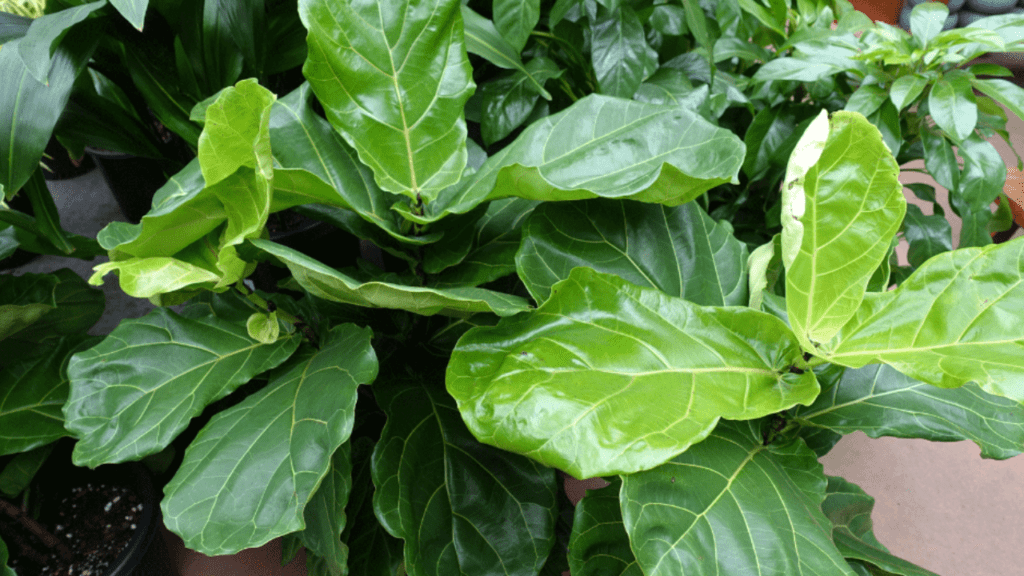
Expert Tips to Stop Your Fiddle Leaf Fig from Dropping Leaves
If you’ve noticed your fiddle leaf fig dropping leaves, you’re not alone. Many plant enthusiasts encounter this common issue, which can be frustrating without understanding the underlying causes. Fiddle leaf figs (Ficus lyrata) are beloved for their large, glossy leaves and elegant presence, but when those leaves start falling, it’s a sign that something needs attention.
Fiddle leaf figs are notorious for dropping leaves, and it can be a frustrating issue for many plant owners. However, there are some expert tips to help prevent your fiddle leaf fig from dropping leaves. First, make sure your plant is getting enough sunlight. Fiddle leaf figs thrive in bright, indirect light, so placing them near a sunny window can help prevent leaf drop. Additionally, be mindful of overwatering – fiddle leaf figs prefer to dry out slightly between waterings, so be sure to let the top inch of soil dry before watering again. Lastly, consider the humidity levels in your home – fiddle leaf figs prefer higher humidity, so misting the leaves or using a humidifier can help prevent leaf drop. By following these expert tips, you can help keep your fiddle leaf fig healthy and prevent it from dropping leaves.
Table of Contents
ToggleUnderstanding Fiddle Leaf Fig Anatomy and Growth Patterns
Overview of fiddle leaf fig (Ficus lyrata) characteristics
The fiddle leaf fig, also known as Ficus lyrata, is a popular houseplant known for its large, glossy leaves and striking appearance. This plant is native to the tropical rainforests of West Africa and has become a favorite among plant lovers for its elegant and dramatic foliage. The fiddle leaf fig can grow up to 10-15 feet tall indoors, making it a statement piece in any room.
When it comes to caring for a fiddle leaf fig, it’s important to understand its anatomy and growth patterns. The leaves of the fiddle leaf fig are large, violin-shaped, and can grow up to 15 inches long and 10 inches wide. The plant’s trunk is usually slender and can grow to be quite tall, giving it a tree-like appearance.
In terms of growth patterns, the fiddle leaf fig prefers bright, indirect light and consistent watering. It’s important to let the top inch of soil dry out slightly between waterings to prevent root rot. Additionally, regular fertilization during the growing season can help promote healthy growth and lush foliage.
Overall, the fiddle leaf fig is a stunning plant that can make a bold statement in any indoor space. Understanding its characteristics and growth patterns can help you care for this plant and enjoy its beauty for years to come.
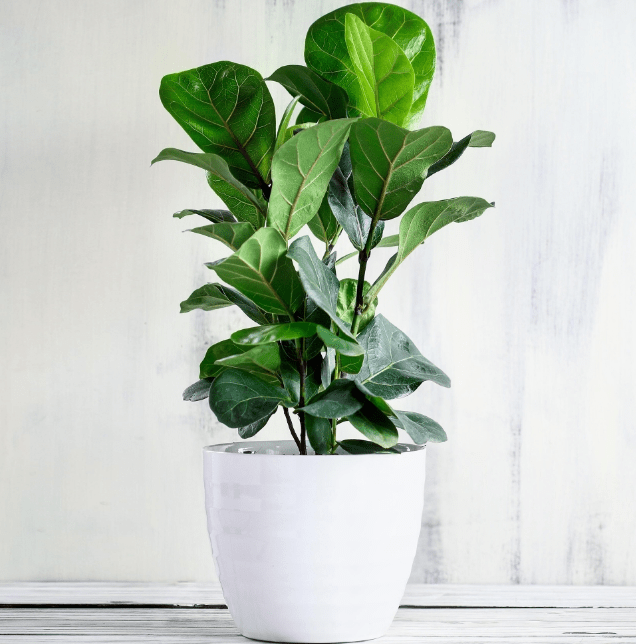
Growth patterns and lifecycle stages relevant to leaf drop
The fiddle leaf fig goes through different growth patterns and lifecycle stages that are relevant to leaf drop. As the plant grows and matures, it is normal for older leaves to drop off to make room for new growth. This is a natural part of the plant’s life cycle, and it is important to understand that leaf drop can be a sign of the plant’s overall health. Factors such as changes in light, temperature, and watering can also impact the plant’s growth and leaf retention. By paying attention to the plant’s growth patterns and providing proper care, you can help minimize leaf drop and promote healthy foliage. It’s important to monitor the plant’s overall health and make adjustments to its care routine as needed to ensure it continues to thrive.
Mention factors that can influence leaf health
The health of a plant’s leaves can be influenced by a variety of factors. Light is one of the most important factors that can impact leaf health. Insufficient or excessive light can cause the leaves to wilt, turn brown, or drop off. Temperature is another important factor to consider. Extreme temperatures can stress the plant and lead to leaf damage. Proper watering is essential for leaf health as well. Overwatering or underwatering can cause the leaves to become yellow or wilt. Additionally, factors such as humidity levels, air circulation, and nutrient deficiencies can also affect leaf health. It’s important to monitor these factors and make adjustments to the plant’s care routine as needed to ensure the health and vitality of its leaves.
Environmental Factors Contributing to Leaf Drop
Importance of light intensity and quality
Light intensity and quality are crucial factors in maintaining the health and vitality of plant leaves. Insufficient or excessive light can cause the leaves to wilt, turn brown, or drop off. It’s important to ensure that plants receive the right amount of light for their specific needs. The quality of light, including the spectrum and duration of exposure, also plays a significant role in leaf health. It’s important to consider these factors when placing plants in different locations within your home or garden. Additionally, factors such as humidity levels, air circulation, and nutrient deficiencies can also affect leaf health. It’s essential to monitor these environmental factors and make adjustments to the plant’s care routine as needed to ensure the health and vitality of its leaves.
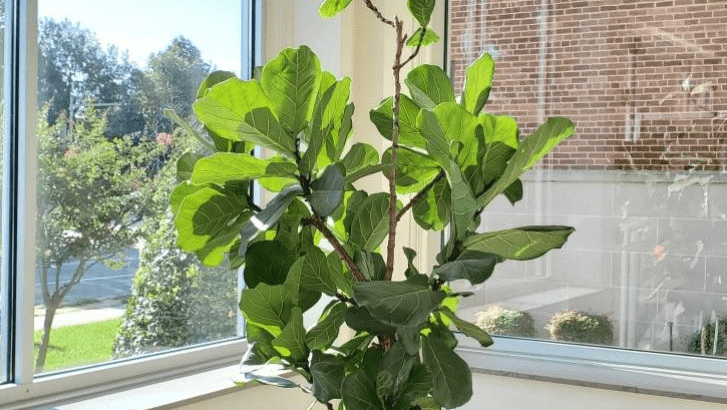
Effects of temperature fluctuations and drafts
Effects of temperature fluctuations and drafts can also contribute to leaf drop. Sudden changes in temperature, especially extreme cold or heat, can cause stress to the plant and result in leaf drop. Drafts from windows or doors can also create temperature variations that are harmful to the plant. It’s important to place plants in locations where they are not exposed to drastic temperature changes or drafts. Maintaining a consistent and suitable temperature for the specific plant species is crucial for preventing leaf drop. It’s also important to be mindful of the season and make necessary adjustments to the plant’s environment to ensure it is well-protected from temperature fluctuations. By monitoring these environmental factors and making appropriate adjustments, you can help maintain the health and vitality of your plant’s leaves.
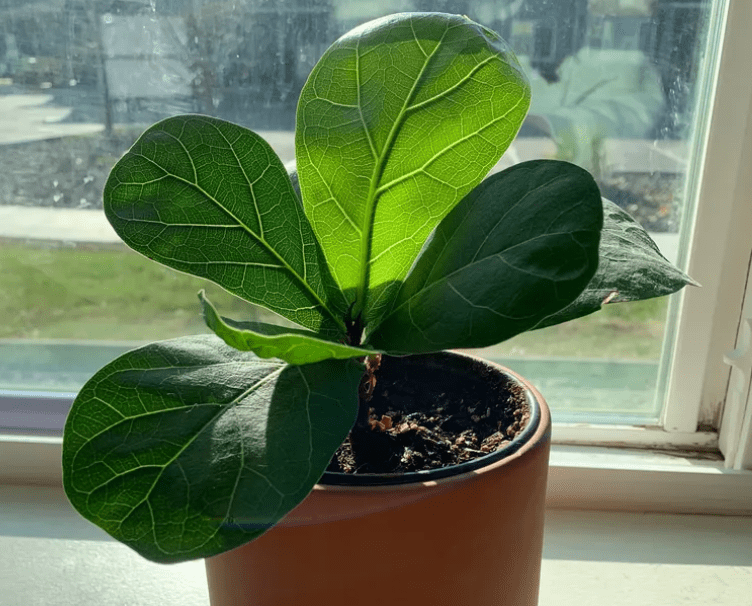
Watering Practices and Their Impact on Leaf Health
Ideal watering frequency and techniques
Ideal watering frequency and techniques are crucial for ensuring the health and vitality of your plants. Overwatering or underwatering can both have negative effects on the leaves of your plants. It’s important to research the specific watering needs of each plant species and adjust your watering schedule accordingly. In general, most plants prefer to be watered when the top inch of soil is dry, but this can vary depending on the type of plant.
When watering your plants, it’s important to do so gently and evenly to ensure that all parts of the soil are moistened. Avoid splashing water onto the leaves, as this can lead to fungal diseases and other issues. Using a watering can with a narrow spout or a drip irrigation system can help to control the flow of water and prevent oversaturation of the soil.
In addition to frequency and technique, the quality of the water you use can also impact the health of your plant’s leaves. Tap water with high levels of chlorine or other chemicals can be harmful to plants. If possible, use filtered or rainwater to water your plants.
By paying attention to the specific watering needs of your plants and using proper techniques, you can help to prevent leaf drop and promote overall plant health.
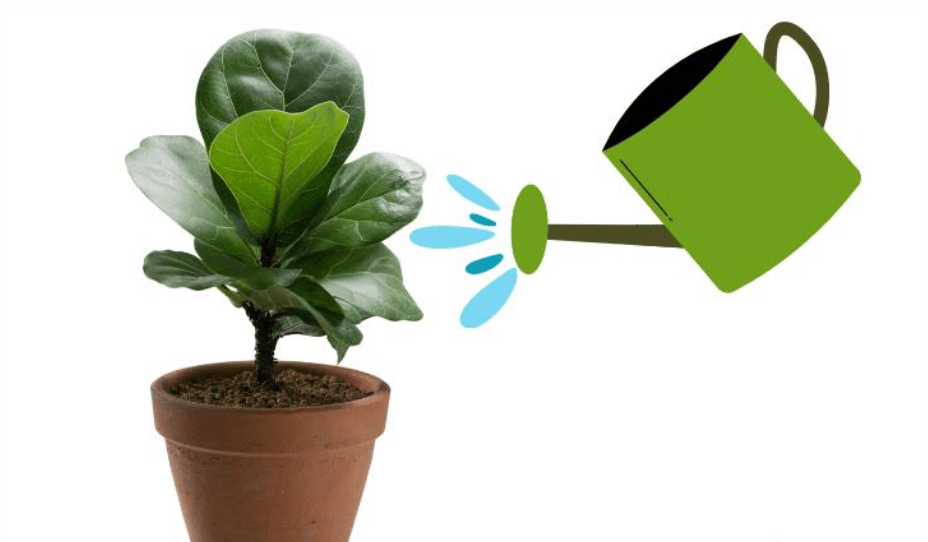
Signs of overwatering and underwatering
Signs of overwatering and underwatering can be easy to spot if you know what to look for. Overwatering can lead to yellowing or wilting leaves, mold or mildew growth, and a musty odor coming from the soil. The soil may also feel waterlogged and soggy. On the other hand, underwatering can cause the leaves to become dry, crispy, and brown, and the soil may be dry and hard to the touch. The key is to pay attention to the condition of the soil and the appearance of the leaves to determine if your plants are getting the right amount of water. Adjust your watering routine accordingly to keep your plants healthy and thriving.
Nutritional Requirements for Healthy Leaf Growth
Essential nutrients for fiddle leaf figs
Essential nutrients for fiddle leaf figs include nitrogen, phosphorus, potassium, and magnesium. These nutrients are important for promoting healthy leaf growth and overall plant health. You can provide these nutrients to your fiddle leaf fig through a balanced fertilizer specifically formulated for houseplants. Make sure to follow the instructions on the fertilizer label to avoid over-fertilizing, which can damage the plant. Additionally, providing proper sunlight, humidity, and temperature conditions can also contribute to the overall health and growth of your fiddle leaf fig. By paying attention to these essential nutrients and providing the right care, you can help your fiddle leaf fig thrive and continue to grow beautifully.
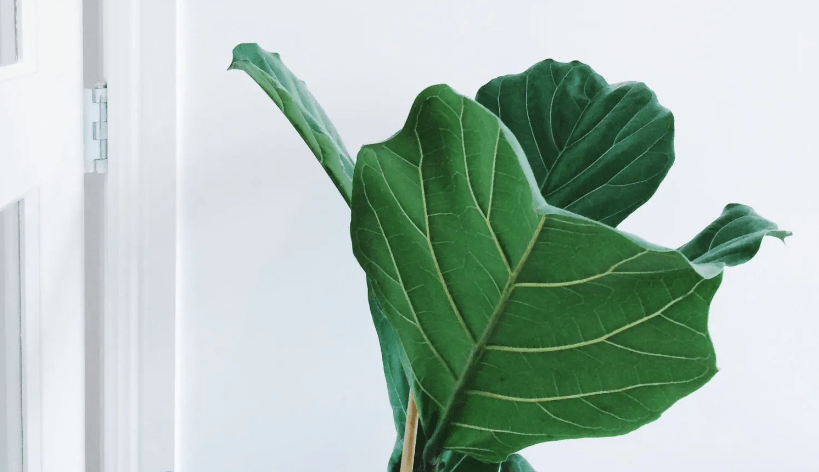
Signs of nutrient deficiencies and their impact on leaves
If your plants are showing signs of nutrient deficiencies, it’s important to adjust your watering routine accordingly to keep your plants healthy and thriving. When it comes to fiddle leaf figs, essential nutrients for healthy leaf growth include nitrogen, phosphorus, potassium, and magnesium. These nutrients are crucial for promoting healthy leaf growth and overall plant health. You can provide these nutrients to your fiddle leaf fig through a balanced fertilizer specifically formulated for houseplants, making sure to follow the instructions on the fertilizer label to avoid over-fertilizing, which can damage the plant. Proper sunlight, humidity, and temperature conditions also play a role in the overall health and growth of your fiddle leaf fig. By paying attention to these essential nutrients and providing the right care, you can help your fiddle leaf fig thrive and continue to grow beautifully. Keep an eye out for signs of nutrient deficiencies, such as yellowing or browning leaves, and address them promptly to ensure the health of your plants.
Common Pests and Diseases Affecting Fiddle Leaf Figs
Identification of common pests (e.g., spider mites, scale insects)
When it comes to caring for your fiddle leaf fig, it’s important to be aware of common pests such as spider mites and scale insects. These pests can cause damage to your plant by feeding on the leaves and stems. Spider mites are tiny pests that can be identified by the fine webbing they create on the leaves of the plant. Scale insects, on the other hand, are small, oval-shaped pests that can be found attached to the stems and leaves of the plant. It’s important to regularly inspect your fiddle leaf fig for any signs of pest infestation. If you notice any pests, you can use a gentle insecticidal soap to help eliminate them. Additionally, maintaining proper humidity levels and keeping your plant clean can help prevent pest infestations. By being proactive and attentive to the health of your plant, you can help prevent common pests from affecting your fiddle leaf fig.
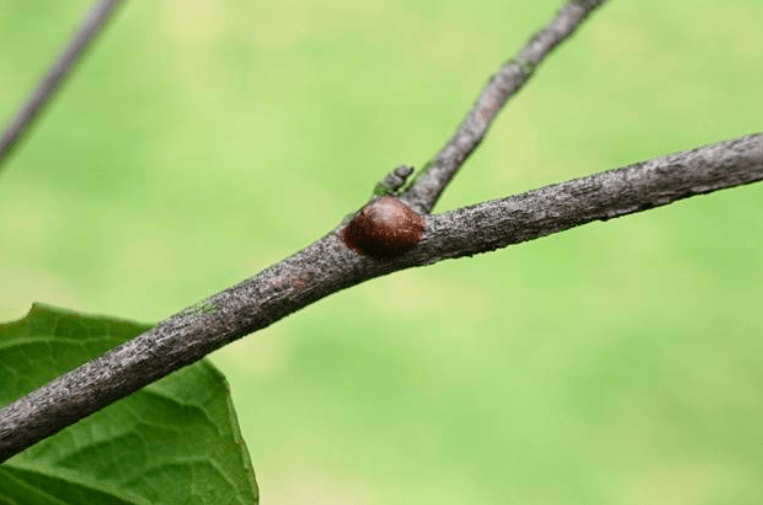
Symptoms and signs of fungal diseases
Symptoms and signs of fungal diseases in plants can include yellowing or browning of leaves, wilting, or stunted growth. You may also notice white or gray powdery patches on the leaves or stems, which can indicate a fungal infection. It’s important to regularly inspect your plants for any signs of fungal diseases, as they can spread quickly and cause significant damage. To prevent fungal diseases, make sure to provide proper air circulation, avoid overwatering, and remove any infected leaves or stems. You can also use fungicides to help control and prevent fungal infections. Taking proactive measures to protect your plants from fungal diseases can help ensure their health and longevity.
Seasonal Considerations and Leaf Shedding
Natural leaf shedding patterns during different seasons
Natural leaf shedding patterns during different seasons are important to consider when caring for your plants. In the fall, many plants, including the fiddle leaf fig, may naturally shed some of their older leaves. This is a normal part of the plant’s growth cycle, and it allows the plant to conserve energy and prepare for new growth in the spring. During this time, it’s important to provide your plant with the right conditions, including adequate sunlight and proper watering, to support healthy leaf shedding and new growth.
By being proactive and attentive to the health of your plant, you can help prevent common pests from affecting your fiddle leaf fig. Symptoms and signs of fungal diseases in plants can include yellowing or browning of leaves, wilting, or stunted growth. You may also notice white or gray powdery patches on the leaves or stems, which can indicate a fungal infection. It’s important to regularly inspect your plants for any signs of fungal diseases, as they can spread quickly and cause significant damage. To prevent fungal diseases, make sure to provide proper air circulation, avoid overwatering, and remove any infected leaves or stems. You can also use fungicides to help control and prevent fungal infections. Taking proactive measures to protect your plants from fungal diseases can help ensure their health and longevity.
Overall, understanding the natural leaf shedding patterns of your plant and being proactive in preventing and treating fungal diseases can help you maintain the health and beauty of your fiddle leaf fig. Keep an eye on your plant’s leaves and take the necessary steps to support its health throughout the changing seasons.
Differentiating between normal shedding and problematic leaf drop
Can be a bit tricky, but it’s important to be able to identify the difference in order to properly care for your plants. Normal shedding often occurs as part of the plant’s natural growth cycle, with older leaves turning yellow and dropping off to make room for new growth. This is a normal and healthy process. However, if you notice excessive leaf drop, particularly in younger leaves, it could be a sign of a larger issue. It’s important to inspect the leaves for any signs of pests or disease. Insects such as spider mites or mealybugs can cause damage to the leaves, leading to excessive shedding. In addition, you may also notice white or gray powdery patches on the leaves or stems, which can indicate a fungal infection. It’s important to regularly inspect your plants for any signs of fungal diseases, as they can spread quickly and cause significant damage. To prevent fungal diseases, make sure to provide proper air circulation, avoid overwatering, and remove any infected leaves or stems. You can also use fungicides to help control and prevent fungal infections. Taking proactive measures to protect your plants from fungal diseases can help ensure their health and longevity. Overall, understanding the natural leaf shedding patterns of your plant and being proactive in preventing and treating fungal diseases can help you maintain the health and beauty of your fiddle leaf fig. Keep an eye on your plant’s leaves and take the necessary steps to support its health throughout the changing seasons.
Advanced Care Techniques for Healthy Fiddle Leaf Figs
Propagation methods for healthy new growth
When it comes to propagating your fiddle leaf fig, there are a few methods you can try to encourage healthy new growth. One common method is air layering, which involves wrapping a section of the stem with moist sphagnum moss and then covering it with plastic to encourage the growth of new roots. Another method is using stem cuttings to create new plants, by taking a cutting from a healthy part of the plant and placing it in water or soil to encourage root development. It’s important to provide the right conditions, such as adequate sunlight and moisture, to support new growth. By using these propagation methods, you can help your fiddle leaf fig thrive and continue to grow in a healthy and vibrant way.
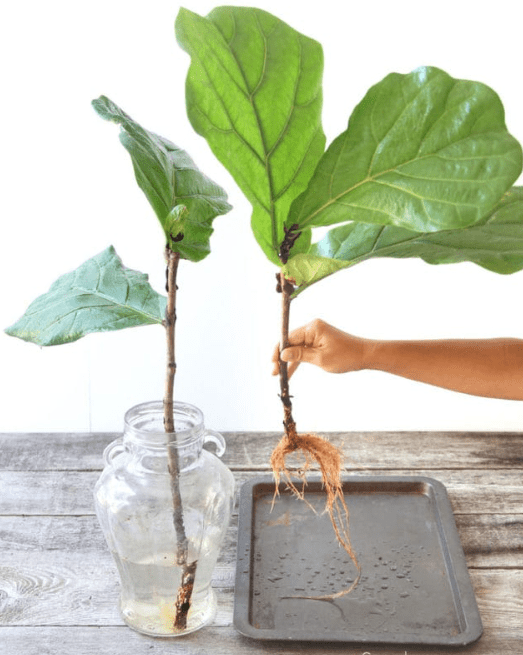
Pruning techniques to promote leaf health
Pruning your fiddle leaf fig can help promote leaf health and encourage new growth. You can start by removing any dead or yellowing leaves to allow more sunlight and airflow to reach the remaining leaves. It’s important to use sharp, clean pruning shears to avoid damaging the plant. You can also prune back any overgrown or leggy branches to promote a more compact and bushy growth pattern. Additionally, pruning can help shape the plant and remove any diseased or damaged areas to prevent the spread of infections. Overall, regular pruning can contribute to the overall health and appearance of your fiddle leaf fig. Just make sure to research the best pruning techniques for your specific plant to ensure the best results.
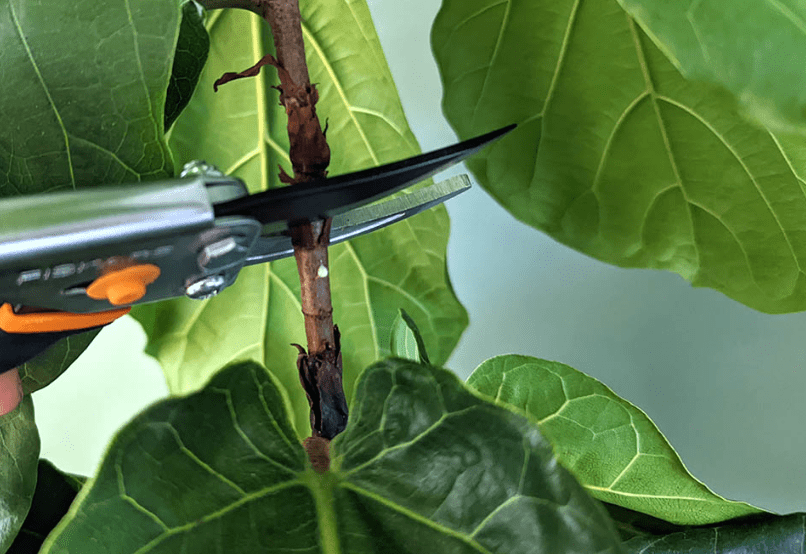
Enhancing overall plant resilience and longevity
Enhancing overall plant resilience and longevity involves taking steps to promote the health and well-being of your plants. Pruning is an important technique that can help improve the overall resilience of your plants. By removing dead or diseased branches, you can prevent the spread of disease and promote new growth. Pruning can also help improve air circulation and sunlight exposure, which are essential for healthy plant growth. Additionally, shaping your plants through pruning can help create a more aesthetically pleasing appearance and encourage strong, sturdy growth. By incorporating regular pruning into your plant care routine, you can promote the longevity and overall health of your plants. Remember to research the specific pruning techniques for each type of plant to ensure the best results.
In conclusion, taking care of your fiddle leaf fig requires a balance of proper watering, adequate sunlight, and soil maintenance. By following these expert tips, you can prevent your plant from dropping leaves and ensure that it remains healthy and thriving in your home. Remember to monitor your plant’s condition and make adjustments as needed to provide the best care for your fiddle leaf fig.
Frequently asked questions And Answer
There are several reasons why your fiddle leaf fig may be dropping leaves, including overwatering, underwatering, lack of sunlight, or changes in environment. It’s important to identify the cause in order to address the issue.
Fiddle leaf figs prefer to dry out slightly between waterings. It’s important to water them when the top inch of soil is dry, but not let them sit in standing water.
Fiddle leaf figs thrive in bright, indirect light. Placing them near a window where they can get plenty of natural light is ideal.
Yes, it’s recommended to fertilize your fiddle leaf fig during the growing season (spring and summer) with a balanced liquid fertilizer. Be sure to follow the instructions on the fertilizer package.
During the winter, it’s important to ensure that your fiddle leaf fig is not exposed to cold drafts or drastic temperature changes. You can also consider using a humidifier to maintain the right level of humidity.
If your fiddle leaf fig has dropped a significant number of leaves, it’s important to assess its overall health and make any necessary adjustments to its care routine. This may include repotting, adjusting watering and light levels, and addressing any potential pests or diseases.
Yes, pruning your fiddle leaf fig can help promote new growth and shape the plant. It’s best to prune in the spring or early summer, and to use clean, sharp pruning shears.
Some common mistakes to avoid include overwatering, placing the plant in direct sunlight, neglecting to dust the leaves, and not providing proper support for the plant as it grows. Being mindful of these factors can help keep your fiddle leaf fig healthy and thriving.
